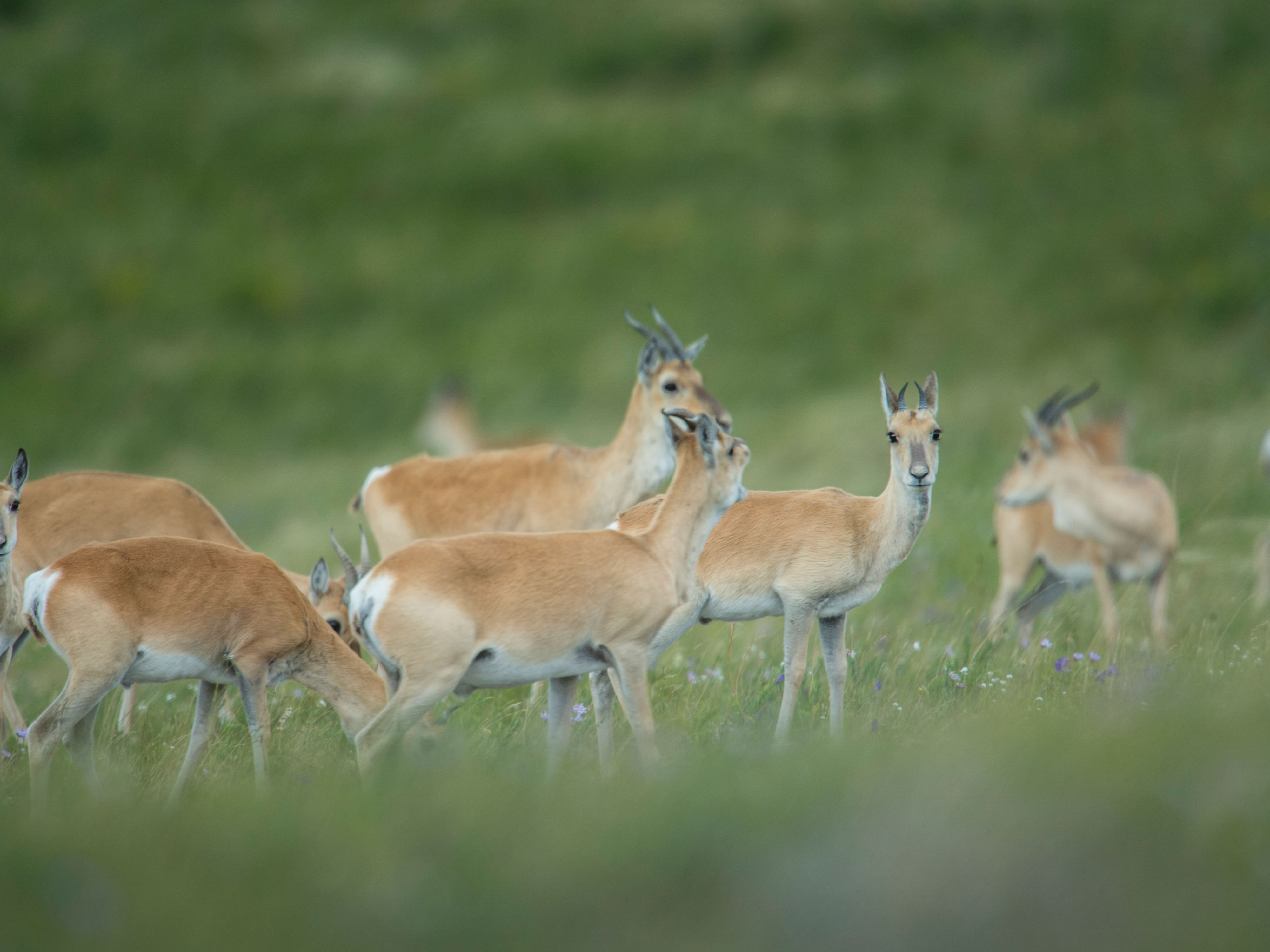Monitored Vultures and Gazelles
The Nature Conservancy worked with 10 research organizations to learn more about the movements of vultures and gazelles.
Support Our Work in Mongolia
Donate NowProtecting land is a key strategy for The Nature Conservancy (TNC) and is how we started more than 65 years ago. In Mongolia, studying species like the iconic gazelle provides scientific data to support land protection.
Scientific monitoring is critical to TNC’s data-driven approach to protected area management in Mongolia. Without data, we do not know if our approach is working or how to modify it to work better.
The Mongolian gazelle is one of our most important monitoring targets, because they are excellent indicators of grassland health. They range widely across the ecosystem, so can be impacted by poor management that degrades the quality of grazing lands (e.g., by overgrazing of livestock) or by infrastructure (e.g., roads) that blocks their migratory paths.
For three years, we installed satellite tags on gazelles in Toson Hulstai Nature Reserve in collaboration with 11 local and international research organizations. The data showed the gazelles’ landscape movement and help us map their habitat connectivity. We will use these data to help us advocate for the protection of key calving grounds as well as areas that are important for wildlife migration pathways.
TNC teamed up with 10 research organizations to research the movements of vultures and gazelles at two nature reserves in Mongolia—Toson Hulstai and Kherlen Toono. Scientists have noted that globally declining cinereous vultures, the largest vulture in the world, prefer to soar the skies of Mongolia’s Eastern Steppe after wintering in Korea. Why?
TNC and the City of Denver Zoo scientists hypothesize that these vultures are attracted by the scavenging opportunities offered by Mongolia’s dense gazelle herds. By fitting gazelles with satellite collars and surveying vultures with drones, we have collected the first evidence that suggests that gazelle calving sites do overlap with vulture feeding sites for their summer range on these reserves. This information will help us better protect these critical areas.



